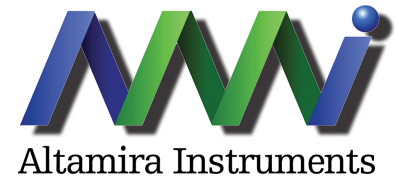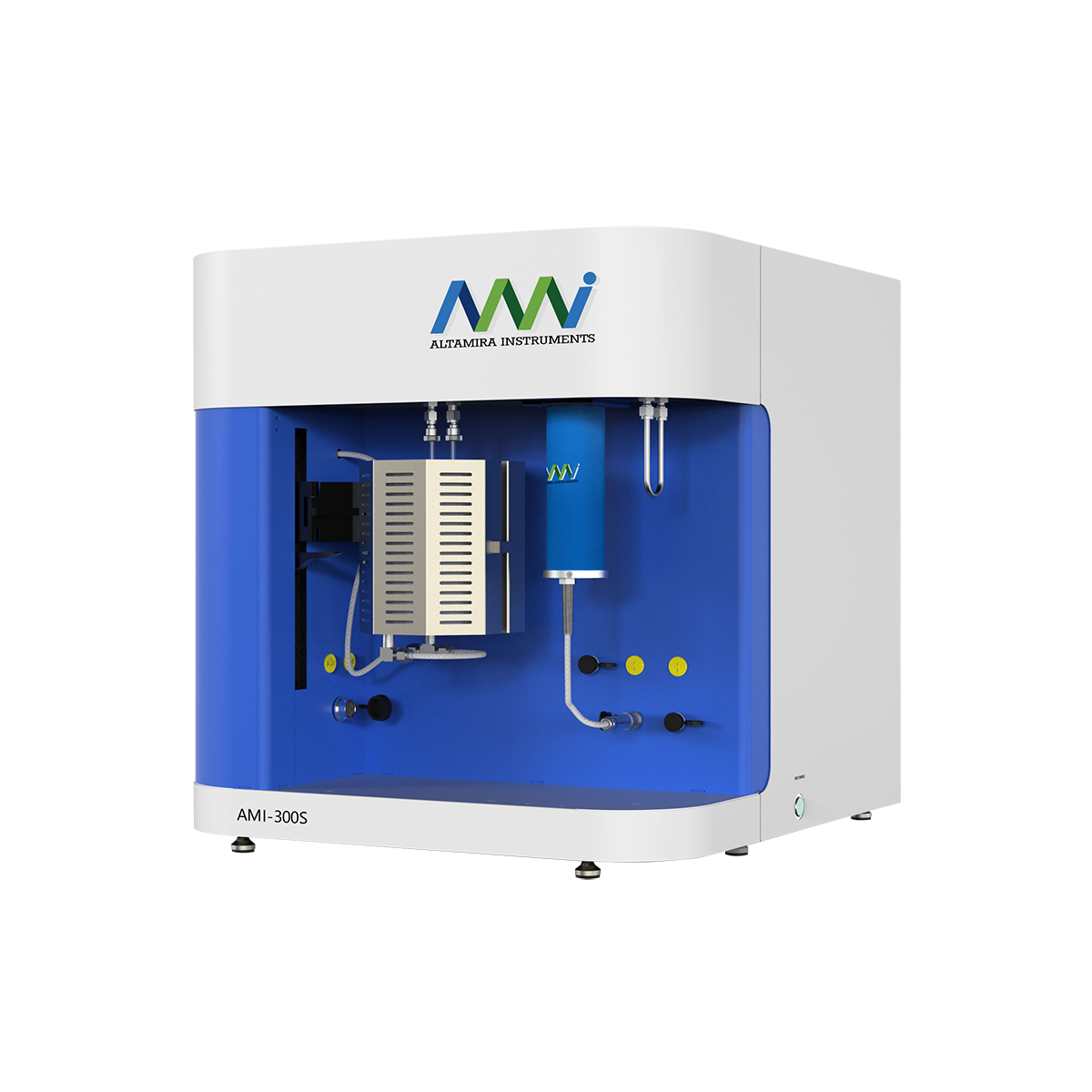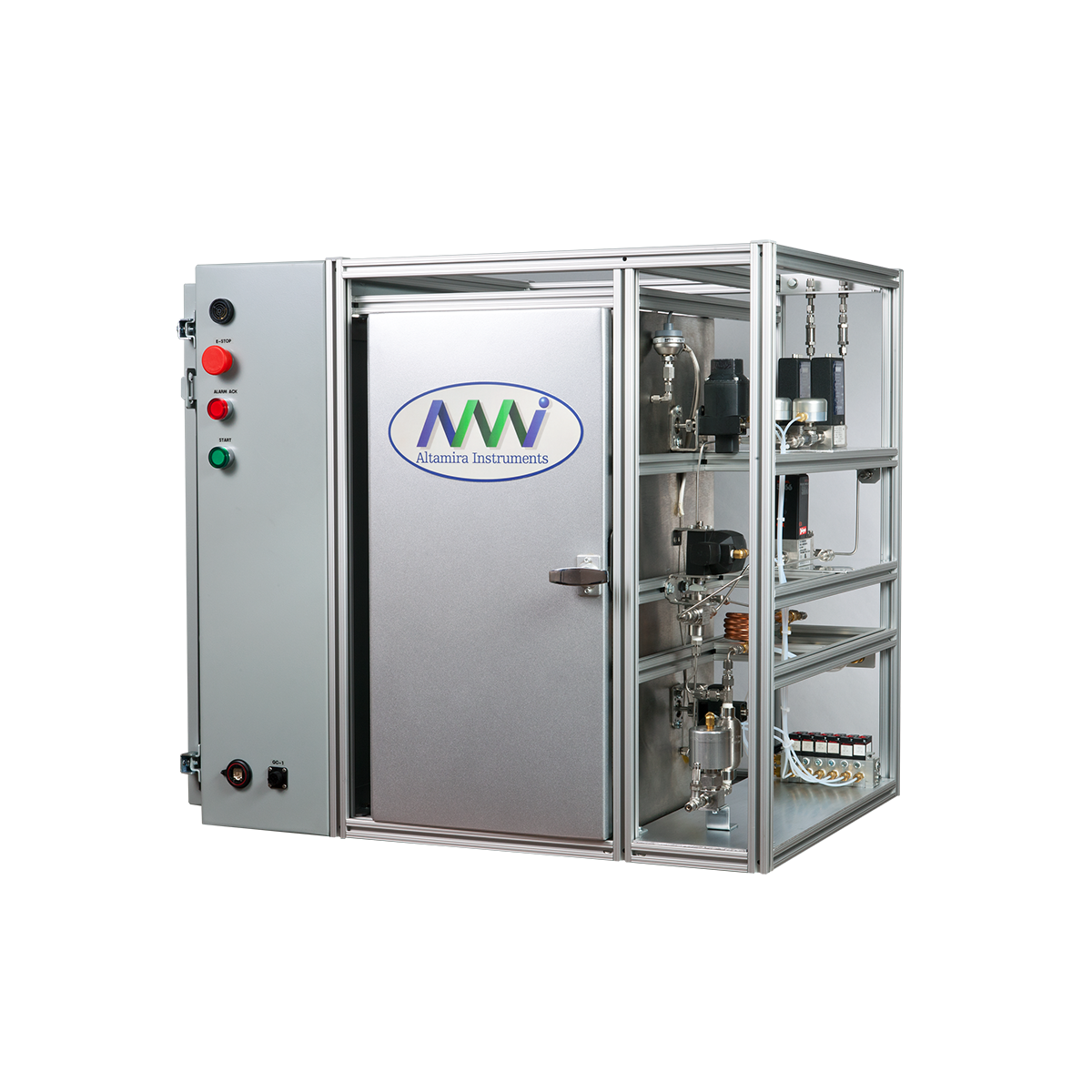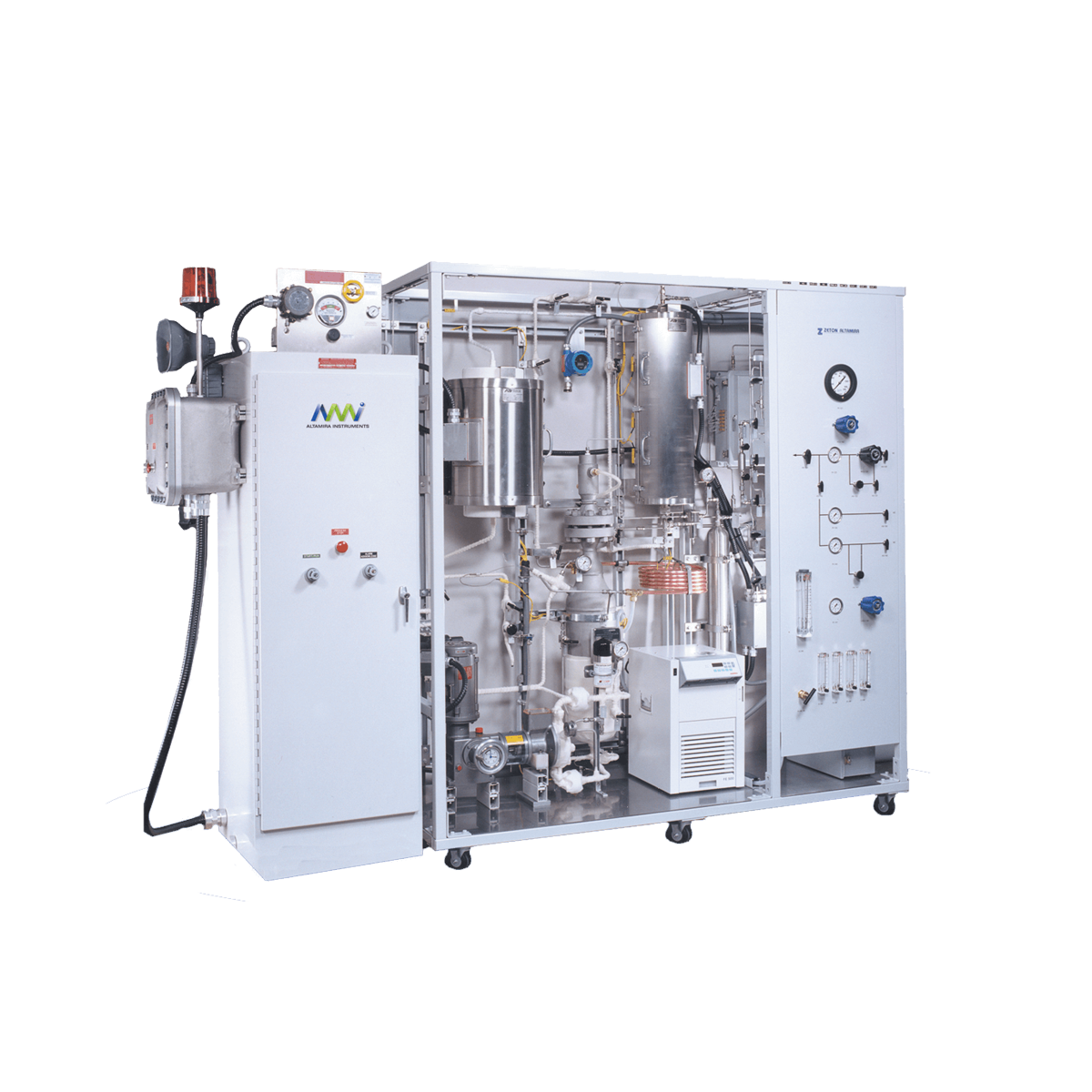The different stainless-steel adsorbers can accommodate either representive sample amounts of industrial adsorbents to simulate an authentic fixed bed adsorber with realistic gas flow compositions or very representative small sample amounts of powders to investigate mixture gas equilibria on novel materials. Sample preparation can be performed in-situ using either inert gas flux or vacuum at temperatures up to 400 °C. Regulating the temperature of the inlet gas and the adsorber allows for uncompromised temperature control throughout the measurement. High precision mass flow con- trollers are used for quick and stable gas mixing and flow rate control. The adsorber pressure is regulated automatically and the pressure drop between adsorber inlet and outlet will be measured by the device. The direction of gas flow through the adsorber for mixSorb L can be switched between up and down-stream to allow inves- tigation of bed regeneration, adsorption desorption cycles, and long-term stability of the technical adsorbent.
Dynamic Sorption Analyzer: The mixSorb
Dynamic Sorption Analyzer: The mixSorb
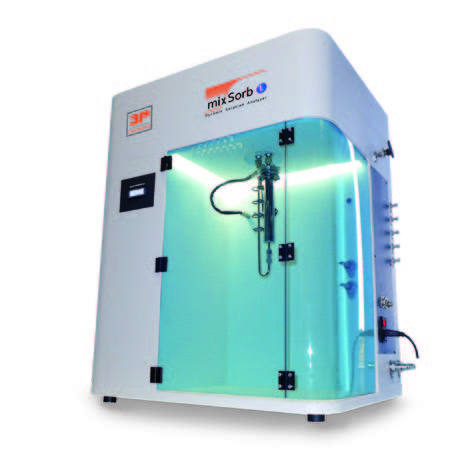
Overview
Industrial adsorbents such as active carbons, zeolites and silica gels are widely used in adsorptive separation processes on a multi-ton scale. The after-treatment of exhaust gasses, the removal of carbon dioxide in biogas plants, purification and fractionation of natural gas, air separation, respiratory protection and separation of isomers are just few examples where adsorptive separation is employed as the most efficient and economic separation technique. A complete understanding of the complex processes taking place in a fixed bed adsorber is the key to achieving the best separation performance. Additionally to that mixed gas adsorption on novel materials, like MOF´s COF´s etc., are in focus of research in recent last years. These materials can have very high selectivities due to their extraordinary surface chemistry and have to be investi- gated by mixed gas sorption for a deeper understanding of their sorption behavior. The mixSorb series provides unique capabilities to investigate complex dynamic sorption processes in a uniquely safe and easy-to-use bench-top instrument. Industrial adsorbents and small sample amounts of R&D groups can be investigated un- der authentic process conditions in a broad temperature and pressure range with adjustable gas flow rates and well-defined gas compositions.
A robust adsorber design, protective doors, an illuminated working area, and a clearly structured PC-control interface assure a safe and convenient instrument operation. The adsorber pressure is continuously measured and displayed on the front of the instrument, even if the instrument is turned off. Work area illumination changes from white to red when the heating mantle temperature exceeds 80 °C, indicating an elevated temperature in the work area. Safety guard sensors for the detection of flammable gasses are standard in all mixSorb instruments. In the event of a gas leakage the instrument is brought to an idle state and shut off automatically.
The different stainless-steel adsorbers can accommodate either representive sample amounts of industrial adsorbents to simulate an authentic fixed bed adsorber with realistic gas flow compositions or very representative small sample amounts of powders to investigate mixture gas equilibria on novel materials. Sample preparation can be performed in-situ using either inert gas flux or vacuum at temperatures up to 400°C. Regulating the temperature of the inlet gas and the adsorber allows for uncompromised temperature control throughout the measurement. High precision mass flow controllers are used for quick and stable gas mixing and flow rate control. The adsorber pressure is regulated automatically and the pressure drop between adsorber inlet and outlet will be measured by the device. The direction of gas flow through the adsorber for mixSorb L can be switched between up and down-stream to allow investigation of bed regeneration, adsorption desorption cycles, and long-term stability of the technical adsorbent.
The adsorber outlet gas composition is measured with a built-in Thermal Conductivity Detector (TCD) situated in a thermostatted environment for most precise and stable signal detection. The TCD is pre-calibrated by the manufacturer for 13 common gas mixtures. You are working with a different system? No problem! Due to fully automated bypass calibration, almost any binary mixture can be detected. The additional mass spectrometer control capability allows for the quick and easy interfacing of an optional mass spectrometer.
Applications
• Determination of breakthrough curves
• Investigation of kinetic performance of adsorbents
• Investigation of co-adsorption and displacement phenomena
• Determination of sorption selectivity
• Dynamic adsorption and desorption experiments
• Determination of single- and multi-component adsorption data
• Investigation of heat profiles along the adsorber bed
• Measurement of adsorption in the presence of water or others vapors
• mixSorb L series: Reasonable downscaling of industrial separation
processes
• mixSorb S series: Possibility for R&D groups to get data of dynamic
adsorption and desorption experiments with low samples mass on
powder (< 1 cc)
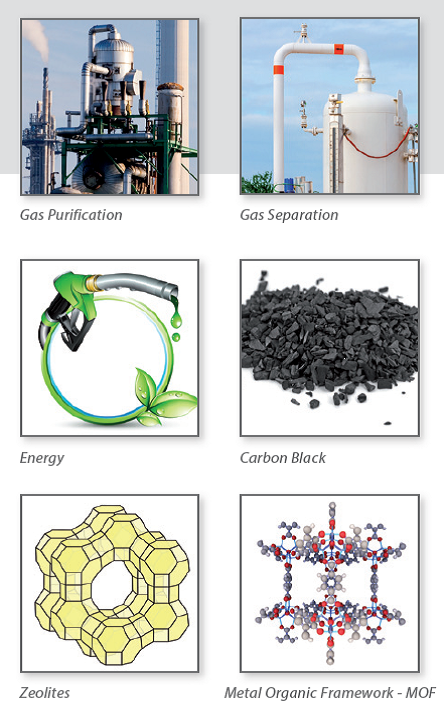
Features
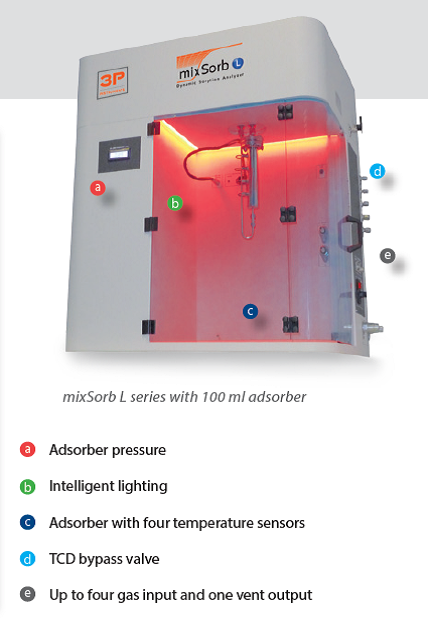
• Easy and intuitive PC-control
• Automated processing of sequential adsorption and desorption
experiments
• In-situ sample preparation
• Automated regulation of the adsorber pressure
• Up to 4 high precision mass flow controllers
• Automated built-in gas mixing
• Evaporator option for introduction of water and other vapors
• Measurement of inlet and outlet gas composition
• Temperature control of inlet gas and adsorber
• Determination of heat profiles within the adsorber bed with up to four
temperature sensors
• Monitoring of pressure drop along the adsorber
• Built-in thermal conductivity detector (TCD)
• Optional gas analysis via interfaced Mass Spectrometer
• Safety guard sensor for flammable gases for automatic shut down
• Enhanced Safety by intelligent illuminated workspace
Benefits
Built-in Sample Preparation up to 400 °C - Investigation of hydrophilic materials (i.e., Zeolites and Silicagels).
Linear Heating Rates up to 10 K/min - Slow and controlled heating of sensitive materials.
Automated Gas Mixing - No need for multiple pre-mixed gas tanks, increasing flexibility of measurement conditions.
PC Control and Data Acquisition - Completely programmable for operator-free analysis.
Detection Pressure on Adsorber Inlet and Outlet - Observation of pressure drop in the column.
Built-in Thermal Conductivity Detector (TCD) - Automated time-resolved measurement of outlet gas composition.
Bypass Connection - Measurement of inlet gas composition before analysis.
Automated Pressure Regulation - Completely programmable for operator-free performing of pressure steps.
Optional Gas Analysis via Interfaced MS - Investigation of ternary, and for analysis of trace quantities.
Battery-Backed Pressure Display - Monitoring of column pressure, even when power is off.
Safety Guard Sensor - Automatic shut down and warning in PC software after reaching 1 % CxHy in manifold (i.e., caused by leaks). Switching Illumination Light in working area switched from white to red, if the column temperature is above 80 °C (preventing of accidental contact with hot surfaces).
Flexibility
Alternative Sample Cells - A small adsorber option allows separation studies with very low concentrations and vapors on high performance materials with shorter measurement times. Other adsorber sizes as well as customized membrane and filter cells are available on request.
Circulator Option - A single circulating bath can be used for the precise tempera- ture control of the inlet gas and the adsorber between -20°C and 90°C.
Beaker Option - The Beaker Option gives the user the opportunity to regulate the temperature of the adsorber column.
Mass Spectrometer Option - With the Mass Spectrometer Option, a mass spectrometer can be controlled by the mixSorb Manager software. Controlling includes turning the filaments on/off, starting/stopping data acquisition and live data integration.
Mass Spectrometer Option - With the Mass Spectrometer Option, a mass spectrometer can be controlled by the mixSorb Manager software. Controlling includes turning the filaments on/off, starting/stopping data acquisition and live data integration.
Customized - The number and range of mass flow controllers (MFCs) is determined by the customer’s needs. Mass flow controllers are available in different flow ranges. With respect to the applica- tion, a suitable set of up to four MFCs can be configured for optimal experimentation. Flexible: The number and range of MFCs can be changed at any time in field upgrades. Several options and accessories are available for further customizing mixSorb L analyzers for individual needs and applications. This includes a Kalrez® version, with better chemical resistance.
Vacuum Option - With the Vacuum-Option, a vacuum pump can be connected to the instrument. The software allows the activation of the pump to evacuate the manifold and the adsorber column dur- ing pretreatments or analyses. In addition to a more effective sample pretreatment, this option will allow the emulation of a VPSA-process (Vacuum-Pressure Swing-Adsorption) with one adsorber column.
SPECIFICATIONS
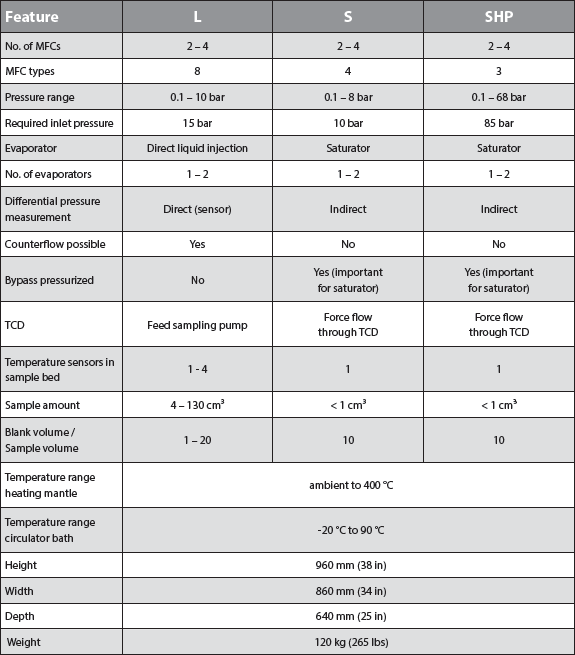
mixSorb Manager
The user-friendly control software mixSorb Manager provides real-time control and programmable operation of all system functions, such as gas flow rates and gas compositions, flow paths and direction of flow, temperature ramps and dwell times, etc. The Software assists the user in the configuration of complex adsorption and desorption sequences. Analysis sequences can be processed fully automated and unattended. The definition of intelligent start/stop criteria provides unprecedented flexibility and facilitates a most efficient and economic operation (conserving gas usage). Further software features are:
• Real-time data presentation
• Manual mode control
• Demo mode for operator training and education
• Historical data trending
• System alarm settings
• User account management (hierarchy of user access levels)
• Well-structured log files
• Auto-save function
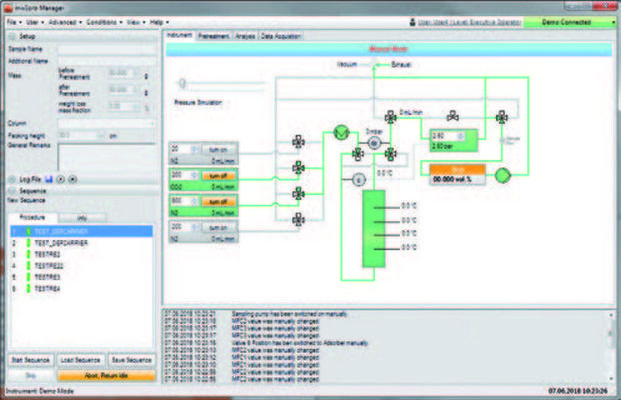
3P Sim
The included simulation software 3P sim provides sophisticated data reduction and simulation capabilities, such as:
• Integration of breakthrough curves
• Comprehensive parameter studies
• Simulation and prediction of breakthrough behavior and heat profiles
• Calculation of single and multi-component adsorption data
• Determination of selectivity, affinity, and kinetic coefficients
Complex calculations or basic research, 3P sim accommodates it all, making it a powerful tool for both industry and academia.
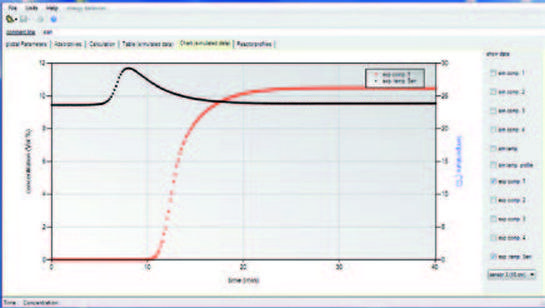
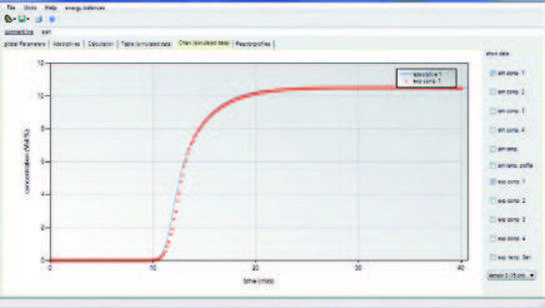
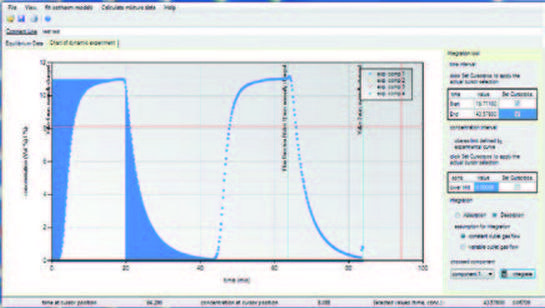
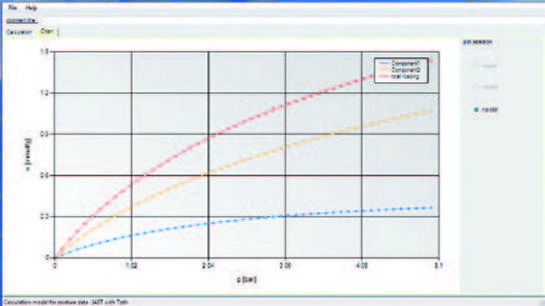
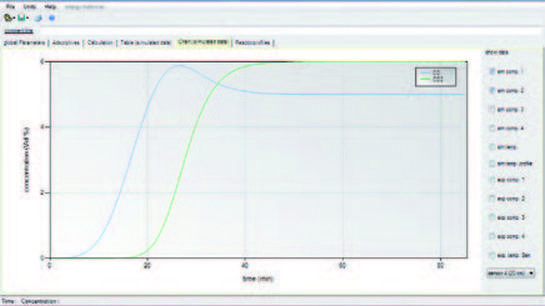
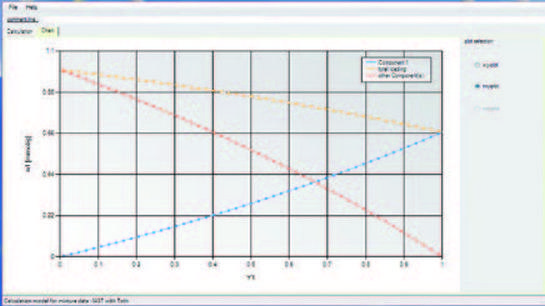
Specific Tests and Capabilities
- Adsorption of gas mixtures
- Mixed gas adsorption
- Gas mixture
- Gas/steam mixture
- Dynamic sorption
- Breakthrough curves
- Breakthrough Analyzer
- Gas separation processes

